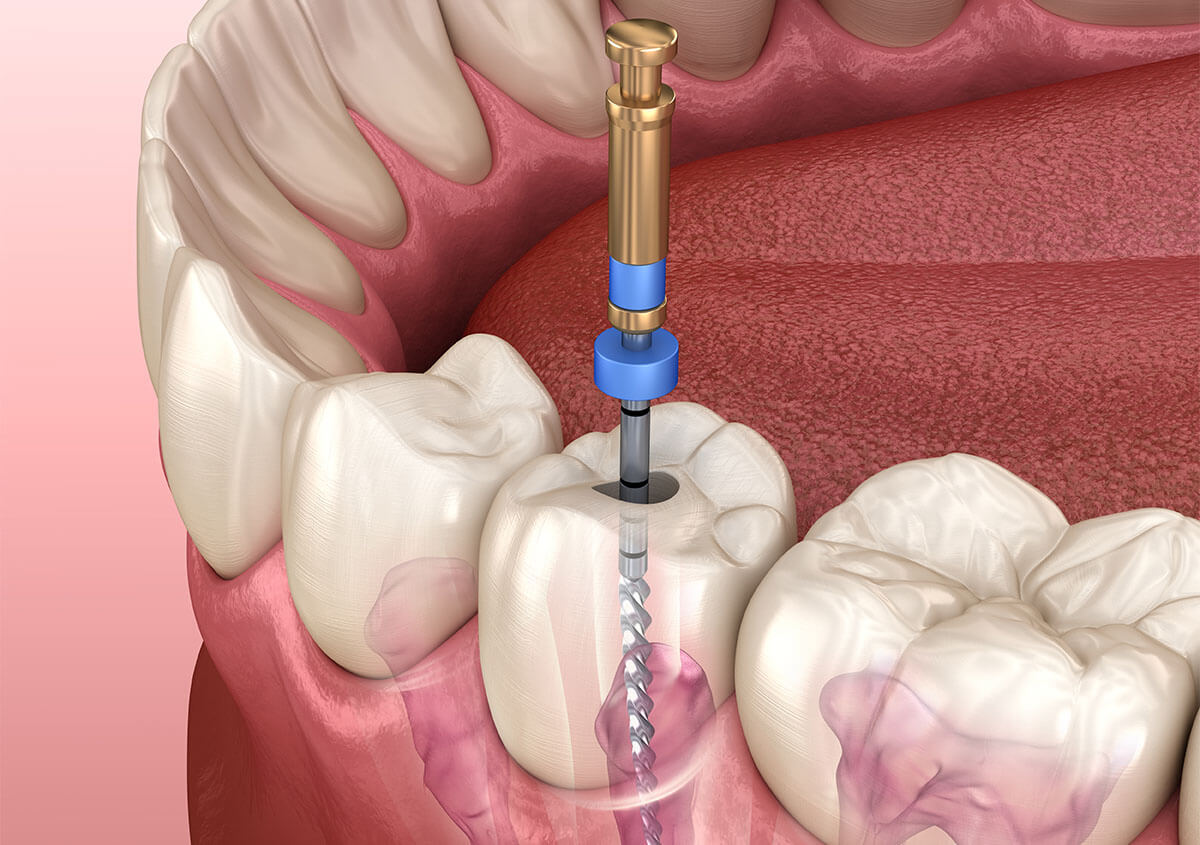Dentist in Colorado Springs for Removal of root canal treated teeth
At Dental Health and Wellness in Colorado Springs, Colorado, patients visit us for root canal removal for a variety of reasons. In some cases, a root canal-treated tooth has failed, causing pain and discomfort years after it was initially treated. In other cases, patients initially underwent root canal therapy to save a tooth but now are concerned about the potential for the infection and inflammation in the tooth to spread into the surrounding tissues and bloodstream. Dr. Brady listens to patients’ concerns and works with each person on an individual basis to determine whether root canal removal is right for them and discuss their options for the next steps.
Why root canals can fail
Root canal therapy is a treatment designed to remove the infected inner contents of the tooth, including the pulp and nerve, after traumatic injury, disease, or decay. While the procedure is designed to save the tooth and prevent the need for extraction, the success of the procedure can be affected by a number of factors, including inadequately filling of the canal (or conversely, overfilling it), a bacterial infection in the tooth that persists after treatment, leakage from the seal, and complications arising from the treatment procedure itself. Signs that you may have a failed root canal include:
- Pain when you are biting on foods
- Swelling in the area
- Bone loss that is visible on dental x-rays, which can be caused by a bacterial infection in the treated tooth
- A bad smell coming from the tooth
- Discoloration in the tooth
Removing a root canal treated tooth
While in an ideal world, we would keep all of our permanent teeth for our whole life, in some cases, it is in a patient’s best interest to have a root canal tooth extracted. Dr. Brady uses a protocol for the root canal tooth extraction that is designed to keep you safe and comfortable during the treatment, without spreading further infection. After first numbing the area, Dr. Brady will sanitize the area and remove the tooth entirely, ensuring that no small pieces remain. If there is granulation tissue or a cyst in the area, those will also be removed to help prevent the further spread of toxins and infection. Ozone therapy may be used to help neutralize the infection and inflammation in the area as well. Finally, if needed, sutures are placed to close the gum tissue where the tooth was extracted. After your tooth has healed, we will place a natural-looking, functional new tooth such as a dental implant or bridge.
Learn more at a consultation
If you have been considering root canal removal and are wondering if it is the right option for you, we invite you to call Dental Health and Wellness in Colorado Springs to schedule a consultation. We will perform an in-depth evaluation and discuss the options available to you for your root-canal treated tooth, the cost of the removal, and tooth replacement options that are a good fit for your needs. Our office can be reached at (719) 215-9292, or you can request an appointment online.
Frequently asked questions
When a root canal-treated tooth fails, causing pain and discomfort years later, or when patients initially received root canal therapy to preserve a tooth but are now concerned about the infection and inflammation in the tooth spreading into the deeper structures.
Root canals can fail owing to insufficient canal filling (or, conversely, overfilling), a bacterial infection in the tooth after treatment, leakage through the seal, and difficulties related to the treatment method.
- Pain while chewing into foods
- Swelling in the area
- Bone loss apparent on dental x-rays, possibly caused by a bacterial infection in the treated tooth
- A foul odor emanating from the teeth
- Discoloration in the teeth
After numbing the area, your dentist will sterilize it and remove the tooth, ensuring no tiny bits remain. To avoid the spread of toxins and infection, your dentist will remove any granulation tissue or cysts in the region. Lastly, if required, sutures seal the gum tissue where the tooth was taken.
When your tooth has healed, a natural-looking, functioning replacement tooth, such as a dental implant or bridge, is placed.





